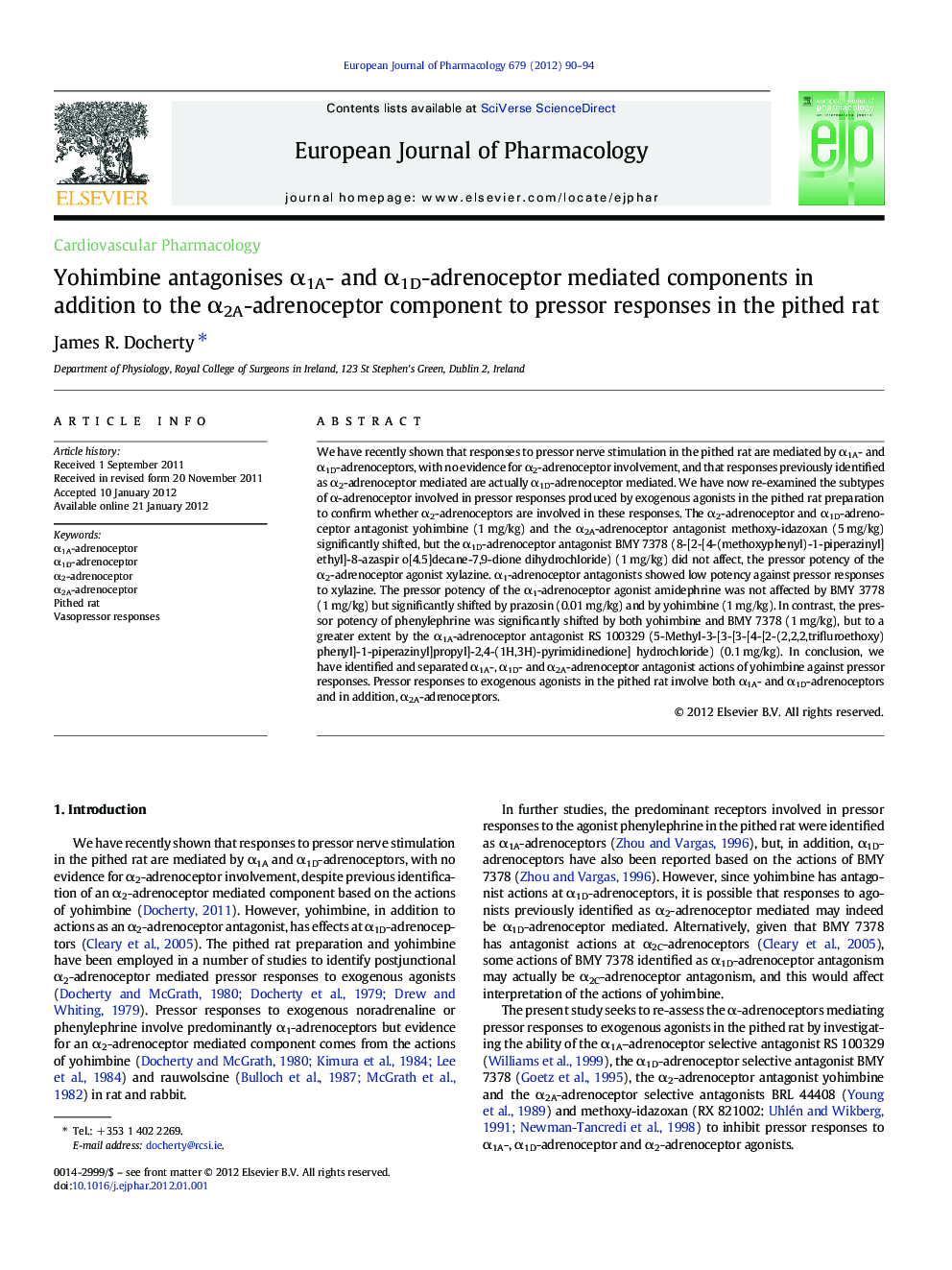| Article ID | Journal | Published Year | Pages | File Type |
|---|---|---|---|---|
| 5829763 | European Journal of Pharmacology | 2012 | 5 Pages |
Abstract
We have recently shown that responses to pressor nerve stimulation in the pithed rat are mediated by α1A- and α1D-adrenoceptors, with no evidence for α2-adrenoceptor involvement, and that responses previously identified as α2-adrenoceptor mediated are actually α1D-adrenoceptor mediated. We have now re-examined the subtypes of α-adrenoceptor involved in pressor responses produced by exogenous agonists in the pithed rat preparation to confirm whether α2-adrenoceptors are involved in these responses. The α2-adrenoceptor and α1D-adrenoceptor antagonist yohimbine (1 mg/kg) and the α2A-adrenoceptor antagonist methoxy-idazoxan (5 mg/kg) significantly shifted, but the α1D-adrenoceptor antagonist BMY 7378 (8-[2-[4-(methoxyphenyl)-1-piperazinyl]ethyl]-8-azaspir o[4.5]decane-7,9-dione dihydrochloride) (1 mg/kg) did not affect, the pressor potency of the α2-adrenoceptor agonist xylazine. α1-adrenoceptor antagonists showed low potency against pressor responses to xylazine. The pressor potency of the α1-adrenoceptor agonist amidephrine was not affected by BMY 3778 (1 mg/kg) but significantly shifted by prazosin (0.01 mg/kg) and by yohimbine (1 mg/kg). In contrast, the pressor potency of phenylephrine was significantly shifted by both yohimbine and BMY 7378 (1 mg/kg), but to a greater extent by the α1A-adrenoceptor antagonist RS 100329 (5-Methyl-3-[3-[3-[4-[2-(2,2,2,trifluroethoxy) phenyl]-1-piperazinyl]propyl]-2,4-(1H,3H)-pyrimidinedione] hydrochloride) (0.1 mg/kg). In conclusion, we have identified and separated α1A-, α1D- and α2A-adrenoceptor antagonist actions of yohimbine against pressor responses. Pressor responses to exogenous agonists in the pithed rat involve both α1A- and α1D-adrenoceptors and in addition, α2A-adrenoceptors.
Related Topics
Life Sciences
Neuroscience
Cellular and Molecular Neuroscience
Authors
James R. Docherty,
